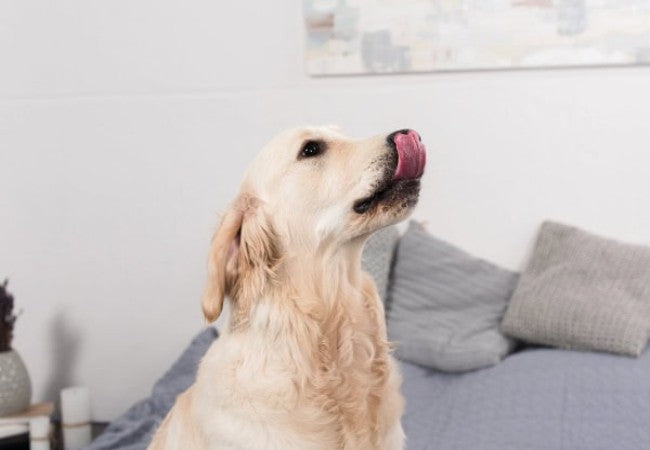Veterinary Guide to Canine Esophagitis 2025 🩺🐶

In this article
Veterinary Guide to Canine Esophagitis 2025 🩺🐶
By Dr. Duncan Houston BVSc
🧬 What Is Esophagitis?
Esophagitis is inflammation of the esophageal lining, which transports food from mouth to stomach. It’s commonly caused by stomach acid reflux, physical irritation, infections, medications, or foreign bodies, leading to pain, regurgitation, and risk of strictures.
👥 Common Causes
- Gastroesophageal reflux (GERD): Acid backflow during anesthesia, chronic vomiting, and hiatal hernia relaxes LES tone.
- Foreign bodies: Bones or toys may lodge, causing irritation, ulceration.
- Medication-induced: Esophageal injury from doxycycline, clindamycin capsules if not followed by water/food.
- Caustic agents: Cleaning chemicals, toxins damaging the mucosa.
- Infections or neoplasia: Spirocerca lupi nodules, tumors.
- Structural issues: Congenital abnormalities, strictures, hiatal hernia.
👀 Recognizing the Signs
- Regurgitation of undigested food or bile—often effortless.
- Repeated swallowing, gagging, coughing, and neck extension.
- Drooling, lip-smacking, air licking, and pain upon swallowing.
- Pain, reluctance to eat, dyspnea, or cough from aspiration pneumonia.
- Weight loss, poor appetite, occasionally fever.
🔍 Diagnostic Strategy
- History & physical exam: Investigate anesthesia, medication, vomiting, regurgitation history; palpate throat, neck pain.
- Laboratory testing: CBC, chemistry, thoracic exam; aspiration pneumonia if present.
- Imaging: Plain radiographs are low yield; barium contrast or fluoro for motility/strictures; thoracic imaging for masses.
- Endoscopy: The gold standard—visualizes erythema, ulceration, biopsies, and foreign body removal.
- Advanced tests: pH monitoring, high-resolution manometry in referral cases.
🛠️ Treatment Plan
1. Remove or Treat Hem Causes
- Endoscopic removal of foreign material; surgery if lodged or causing perforation.
- Discontinue offending drugs or caustic agents.
- Surgical correction if a hiatal hernia is present.
2. Medical Supportive Care
- Acid suppression: Omeprazole (1 mg/kg q24h) or famotidine/rantidine (0.5 mg/kg q12h).
- Cytoprotective agents: Sucralfate 0.5–1 g PO TID binds lesions.
- Prokinetics: Metoclopramide 0.2–0.4 mg/kg q8h or cisapride 0.25 mg/kg q8–12h.
- Pain control: Heavily coat NSAIDs, but use cautiously; opioids or gabapentin if needed.
- Dietary management: Frequent small meals of soft, low-fat food; soak kibble.
📈 Monitoring & Complications
- Mild esophagitis often resolves in days; moderate cases within weeks.
- Aspiration pneumonia: Treat with appropriate antibiotics and support.
- Esophageal stricture: May require dilation if fibrotic rings form.
- Follow-up endoscopy is recommended if severe or strictures are suspected.
🏡 Home Care Essentials
- Feed small, soft meals >4x/day; avoid bones or chew toys.
- Give pills with water or food to minimize mucosal contact.
- Elevate bowls to reduce reflux.
- Watch for regurgitation, coughing, or neck movement—report any that recur.
- Adhere to the medication and follow-up schedule.
📱 Ask A Vet Telehealth Tools
- 📷 Upload videos of swallowing, regurgitation, and gagging to monitor remotely.
- 🔔 Medication & feeding schedule reminders—PPIs, sucralfate, prokinetics.
- 🩺 Track coughing or gagging frequency via app logs.
- 📅 Reminders for recheck endoscopy or radiography if needed.
🎓 Case Spotlight: “Lucky” the Boston Terrier
Lucky, a 4-year-old Boston Terrier who regurgitated after surgery, was diagnosed via endoscopy with moderate esophagitis and a small hiatal hernia. Treatment with omeprazole, sucralfate & metoclopramide plus feeding soft meals resolved symptoms in 10 days. A repeat endoscopy at 4 weeks confirmed healing. Ask A Vet support helped with reminders for meds and feed times—Lucky remains symptom-free 6 months later! 🐶💙
🔚 Key Takeaways
- Esophagitis is inflammation of the esophagus—common causes include reflux, foreign bodies, drugs, and caustics.
- Key signs: regurgitation, gagging, drooling, food refusal, airway irritation.
- Diagnosis relies on history, imaging, and endoscopy.
- Treatment: remove cause, acid suppression, cytoprotection, motility support, careful feeding.
- Monitoring is essential to detect complications like aspiration or strictures early.
- Ask A Vet telehealth enhances adherence, remote monitoring, and optimized nutrition.
Dr Duncan Houston BVSc, founder of Ask A Vet. Download the Ask A Vet app to receive expert telehealth support for your dog’s esophagitis—remote assessments, dietary plans, medication tracking & follow-ups ensure complete recovery 🐶📲






